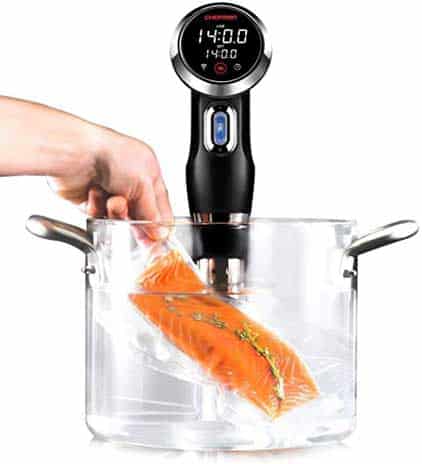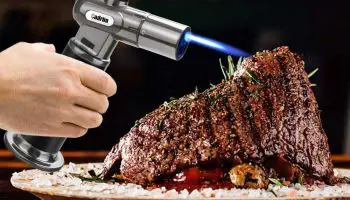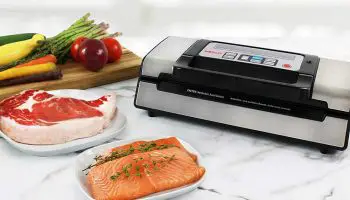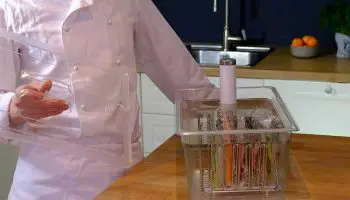Sous vide cooking is fast becoming popular because it maintains color, texture, taste, moisture and cooks evenly. Food is more delicious when cooked in this way.
The method involves cooking food, usually putting it in a package and placing it in a heated water bath to cook slowly. Food can be cooked for up to 72 hours or even more, depending on preparedness.
In this article, we will explore more about this trendy cooking style. Read along.
Do you need a vacuum sealer to cook sous vide?
Sous vide is a French word that means ‘under vacuum.’ For this reason, many people think that sous vide requires a vacuum sealer to prepare. However, you do not need a vacuum sealer for this type of cooking. The method is preferred because water transfers heat better than air due to its molecules being closer together.
More giant spaced air molecules can lead to uneven cooking of foods, and that’s why air is removed. Vacuum sealer bags are not necessary for this, and you can use ziplock bags instead.
How to use Ziplock bags for sous vide?

Ziplock bags are efficient alternatives to vacuum sealer bags when preparing sous vide dishes. They are cheap and easily available, just ensure you get the standard ones.
Because you will not be using a vacuum sealing machine to remove the air, you will need to use the water displacement method when it comes to ziplock bags. The method removes all air from your bag and ensures a ‘vacuum’ like environment in the bag.
How to do it:
Put the food you are cooking in a ziplock bag. Ensure that it does not fill up the bag to the top.
The food should reach at least an inch below the ziplock flap. Go ahead and close the zipper almost all the way.
Take the bag and slowly submerge it in a pot of water. The water pressure will push out the air, and you can also gently help air out by rubbing the bag around the food.
When the food is submerged, and the air is driven out, close the bag completely and place it in your water bath to cook. To prevent the bag from floating around, clip it to the side of the pot.
Floating brings about cold spots in the bag, and it can even block the circulator.
Can the chemicals leak into food?
Plastic has been said to leak harmful chemicals into food when exposed to high temperatures. Some chemicals like BPA and polyvinyl chloride (PVC) may make people wary of using ziplock bags.
However, the bags are made with the same plastic that makes vacuum sealer bags, and they are generally safe, so you should not worry about any chemicals leaking into your food.
Do they melt?
Bags can melt while cooking but only when subjected to very high temperatures. Most of the ziplock plastic bags are made using polyethylene plastic, which begins softening at 195 degrees Fahrenheit.
Cooking temperatures for sous vide will be below 190 degrees Fahrenheit, so it’s not easy for the bags to melt while cooking.
Measures to take
While preparing sous vide, it’s important to take these measures to ensure the cooking runs smoothly:
Use standard ziplock bags – these will ensure better cooking and can cook for longer hours without worries of opening up or melting.
Remove all air – the water displacement method is a great way of removing all air from the package. Air bubbles can lead to uneven spots in the food while cooking.
Ensure the seal is tight – check that the seal is tight before beginning to cook to prevent air from getting in and contents from pouring out.
Other Packaging to use for Sous Vide
If you do not have ziplock bags, you can use:
- Plastic wrap, especially for foods that require a specific shape.
- Sous vide bags.
- Canning jars work great if you are not keen on using plastic.
Recap
Sous vide is an excellent food preparation method that enables food to cook finer, be sweeter, and generally retain it’s properties while cooking evenly.
As we have seen, you do not need to invest in pricey vacuum sealing machines for sous vide, especially if you are just a beginner in the craft.
Although a sealer is great at getting rid of the air, other Packaging like ziplock bags will work just fine and be worth it.
In some instances, ziplock bags will be even more preferred to vacuum sealer bags. Other Packaging to use plastic wrap, sous vide bags, and canning jars.
You can get rid of air using the water displacement method if you do not have a vacuum sealer.





